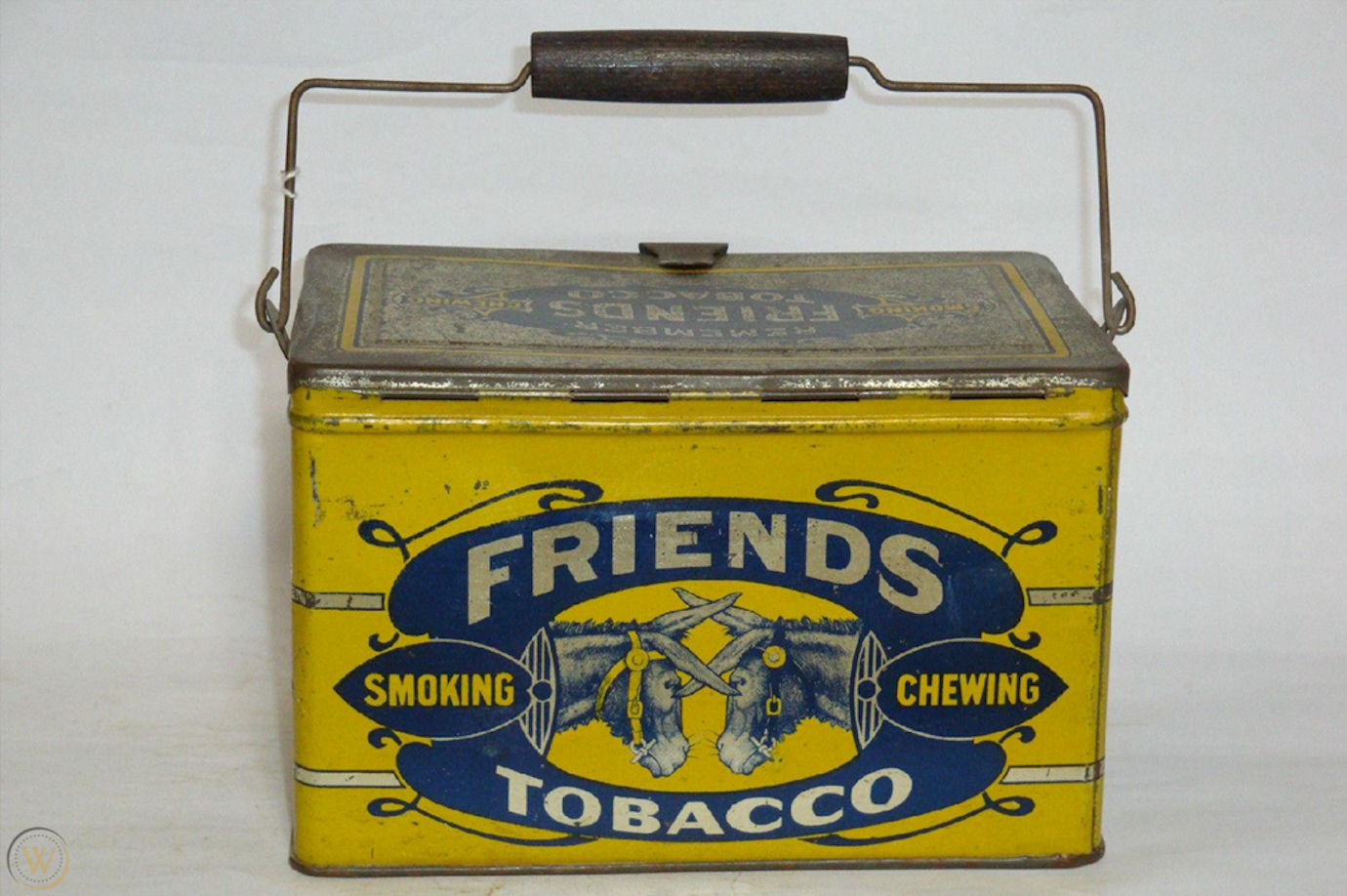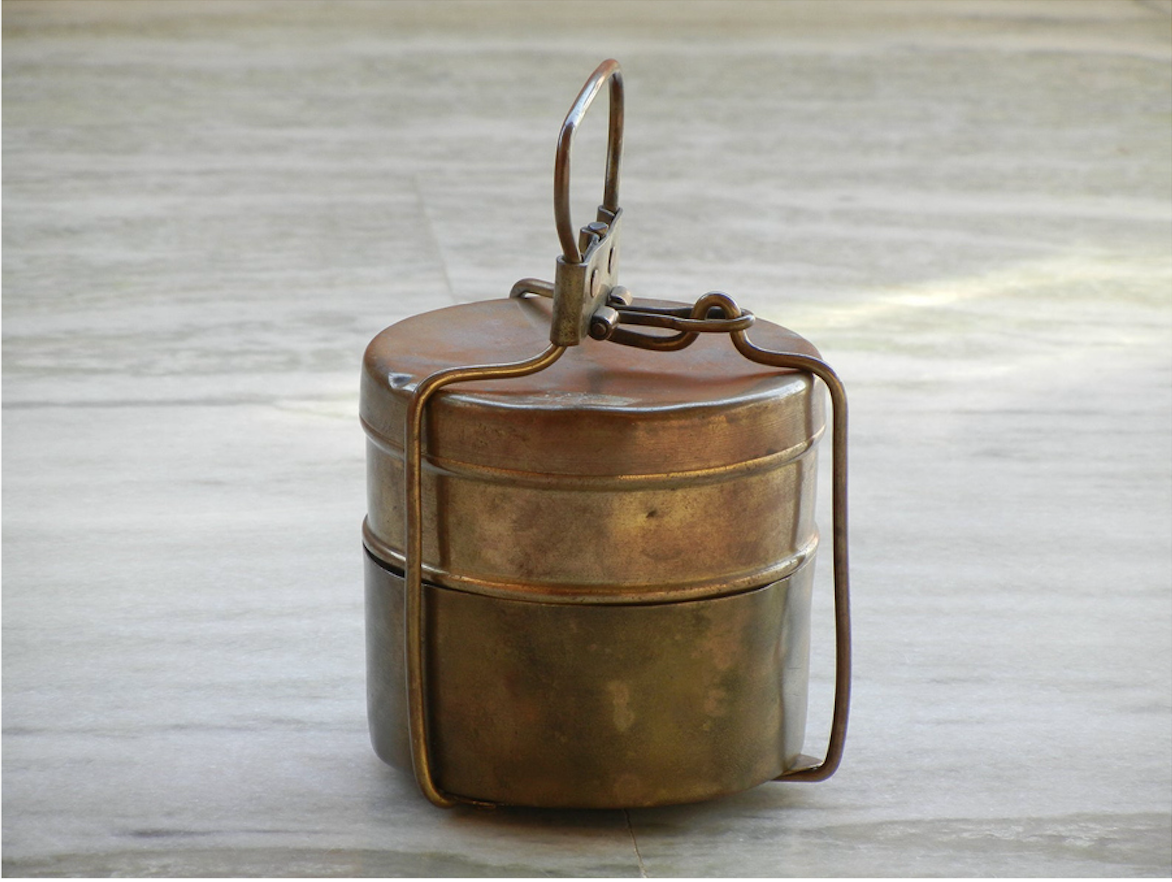CULTURAL SERVINGS:
EPHEMERAL ECHOES
EDWARDIAN PURSE
SCRIMSHAW AND LOVE TOKENS
PILCHARDS AND TROYL
BELTS
LEATHER TANNING
BEER TIME
BEER MATS
LUNCH BOX
SLOW MOVEMENT
SUMMER HEAT
NATURAL DYES
FRAKTUR ART
THE CRIES OF LONDON
SHAKER FURNITURE
BAUHAUS BRUTALISM
BAUHAUS INTERIOR
BAUHAUS SPIRIT
BAUHAUS HISTORY
ROMANTICISM AND REVIVAL
HISTORY OF THE MUSEUM
CABINETS OF CURIOSITY
LUNCH BOX







ORIGINS
A lunch box is an object that has become such a staple item of daily life that we no longer consider how it came to be. Today we are going to be diving into the history of the lunchbox, particularly when they came about, in the late 19th Century, to when they were commercialised in the 1930s.
Increasing industrialisation during the industrial revolution, resulted in workers working outside the home in factories, it became infeasible to go home to lunch every day, thus it was necessary to have something to protect and transport a meal. To begin, some workers wrapped their lunches up in handkerchiefs and placed them inside woven containers, others repurposed old biscuit or cigarette tins. More wealthy workers would pack their lunches in wooden containers, which also acted as a symbol of status. The wealthy rarely used these containers because they were able to afford hot lunches during the day. Due to the arduous nature of factory work, containers needed to be sturdy, and able to protect these lunches from the perils of the job, so woven baskets were quickly discarded for more protective containers.
In 1860s, patents for tin lunch boxes or ‘pails’ began to emerge. These sturdy containers would allow workers to keep foods such as hard-boiled eggs, vegetables, meat, coffee, and pie safe from the toxicity of mines or quarries. Lunch was an important meal for the general worker, it acted as the half-way point of a hard day’s work, and was a chance for people to come together and temporarily distract themselves from an arduous day. Sandwiches and pasties were a popular choice, depending on where you were in the UK. Pasties sported thick pastry crusts so that workers could eat them without needing to wash their hands, and throw the grubby crusts away.
Around the 1910s, kids who aspired to be like their working parents started to bring their own lunch containers to school. The early models resembled picnic baskets and featured whimsical cartoons. From this point, the lunch box became more and more commercialised, until the market turned almost exclusively towards children. In 1935, Disney released their first branded lunch box, and lunchboxes soon became items for self-expression as well as practicality. Nowadays, you can find almost anything printed on a lunchbox; and some vintage items sell for tens of thousands; a funny thought considering they came to be as objects used exclusively by the working classes.
REFERENCES
https://www.smithsonianmag.com/arts-culture/the-history-of-the-lunch-box-98329938/
https://www.etsy.com/uk/listing/817862443/old-vintage-brass-2-compartment-lunch?ga_order=most_relevant&ga_search_type=vintage&ga_view_type=gallery&ga_search_query=lunch+box&ref=sr_gallery-1-15&frs=1&cns=1
https://www.qualitylogoproducts.com/promo-university/history-of-lunch-boxes.htm
https://recipes.howstuffworks.com/menus/history-of-lunch-box.htm
https://i.pinimg.com/originals/ee/56/4e/ee564e10eb726fca69dc54415fe3f391.jpg
https://www.sundancecatalog.com/product/52292.do?code=SMPNRST